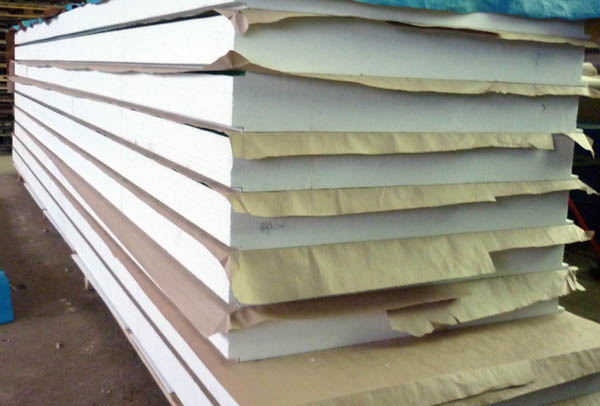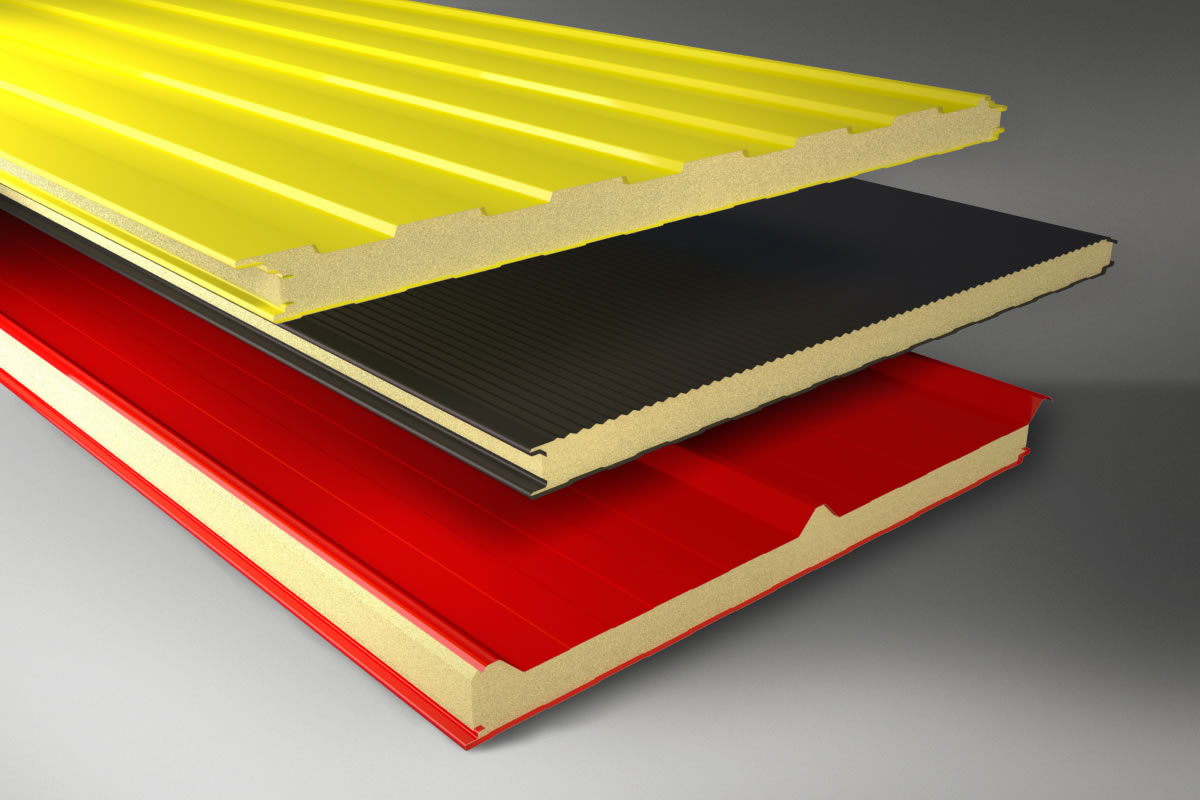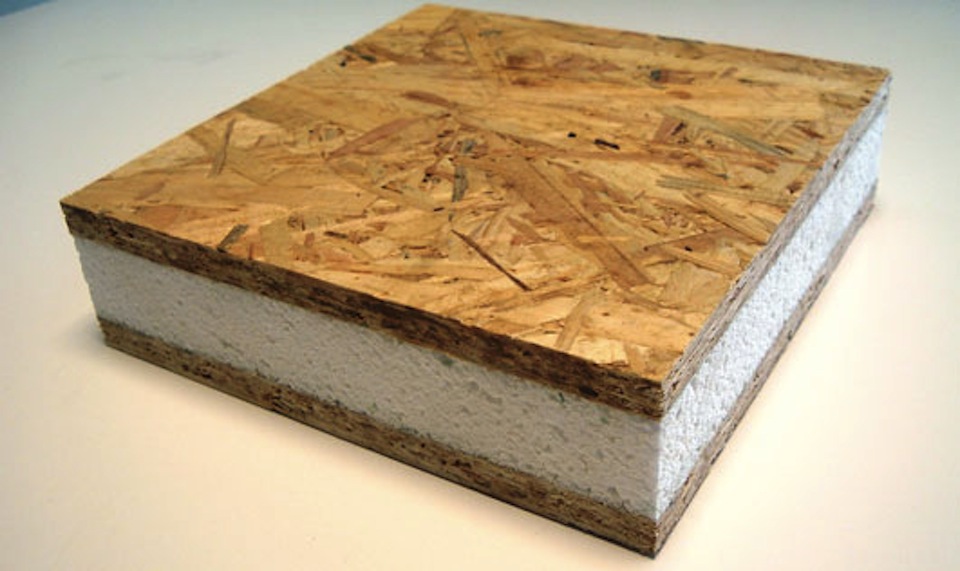Not only does modern life flow rapidly, but the growing speed of building houses, both residential and auxiliary, is gaining in popularity. Rapid construction is carried out through the use of multi-layer structures, modern sandwich panels. Is it possible to make multi-layer panels with your own hands? Let's try to understand.
Content
Manufacture of sandwich panels
If finances allow and you do not want to bother, the easiest way is to get ready-made sandwich panels, for this, link knowing people it is better to address to firm to the manufacturer and to buy the necessary quantity of a material.
And if you like doing everything yourself, you can make sandwich panels yourself. But, doing any work, you need to get a basic knowledge of the upcoming action. First of all, you need to understand what a sandwich panel is.
Most likely, the production of sandwich panels came from the food sandwich.
The sandwich itself consists of several layers.
And building sandwich panels are a three-layer structure.
The central layer is a heat insulator, a material that is capable of storing heat.
And the outer layers should protect the heat insulator from the effects of atmospheric phenomena.
Since the design is the simplest, it is assumed that you can make it yourself without problems.
But, in order for the design to last a long time, you need to know the subtleties, so we will understand the materials and features of creating sandwich panels with their own hands.
Thermal insulation of sandwich panels
Mineral wool is in the lead among the thermal insulation materials that make up the sandwich panels.
The advantage of this material is not only good insulation, but also fire extinguishers, has a high resistance to fire and the ability to maintain its properties, even with a long lezhku, since this material has no tendency to caking.

Polyurethane foam is a heat-insulating material which, even in conditions of high humidity, is not affected by mold and fungus. A sufficient rigidity of the polyurethane foam creates additional stability of the sandwich panel design.
Expanded polystyrene is a heat-insulating material that has a high fire hazard and even because of its low specific gravity and low cost, this insulating material is very rarely used in sandwich panels. Proceeding from the above, the thermal insulation material, the heater itself and its thickness should be selected in accordance with the thermal calculations and depending on the intended use of the future structure.
Material for creating sandwich panel covers

As we understand, the task of the enclosing layers is to protect the heater from the external effects of atmospheric phenomena and to impart rigidity to the future design of sandwich panels.
Proceeding from this, it is possible to name a lot of materials which will be suitable to protect a heater, for example:
- steel galvanized sheet (profiled sheet);
- aluminum sheet;
- sheet of plastic;
- sheet of fiberboard;
- oSB sheet;
- wooden sheet.
Builders consider the most durable and durable steel galvanized sheet, but sandwich panels will be quite heavy due to the high specific gravity of galvanized steel.

Therefore, if you make sandwich panels on your own, select the fencing layer according to your requests.
Glue for sandwich panels
Since we are not dealing with a sandwich, but with a construction structure, the construction must be strong and the quality of the glue is of great importance. Polyurethane adhesive can be either single or double-bonded.
One-component glue is able to harden in air under the influence of moisture, which is in the air.
The two-component adhesive cures because of the chemical reaction that occurs between the two constituents (polyol and isocyanate components).
- Important! The glue should maintain its properties throughout the life of the sandwich panels (at least 50 years). The adhesive should be environmentally safe, moisture resistant, maintain its properties with a temperature change from -40 * C to + 50 * C.
- Important! In the production of sandwich panels with their own hands, one-component glue must be used, since the life time of a single-component glue is greater than that of a two-component glue.
Two-component adhesive is suitable for the production of sandwich panels in automatic production mode.
Assembling sandwich panels
Step by step:
- on the hard, flat surface, the first sheet of the outer shell is laid;
- a layer of glue is applied to the shell sheet;
- a layer of insulation is laid on top of the glue;
- on the top layer of a heater is applied a layer of glue;
- on the adhesive heater is placed the second sheet of the shell;
- the resulting sandwich panel cake is sent under the press, until the glue is completely cured.
Various complications can arise due to the behavior of the adhesive, since the adhesive, when applied to the surface, strongly foams.
Therefore, the adhesive layer must have a certain thickness and density, and only the compression of the collected pie can create an adhesive layer with the required thickness and density.
Since the dimensions of the sandwich panels are rather large, a manual tightening press is necessary for compression.
The press will create a pressure of 0.3 kg / cm2 and under this pressure the sandwich panel will be between 2 and 4 hours.
The press is able to hold not one sandwich panel, but several sandwich panels stacked on top of each other, up to 120 cm high.
To create such a common height of the panel package, you need to do the work quickly, since the glue hardening speed is quite high, and if the glue hardens, without the press, then no solvent will help, you will have to remove it only mechanically.
We conclude that it is necessary to work at high speed, so an assistant is needed.
Technology of sandwich panels
Before proceeding to the gluing, prepare the workplace. The workplace should be cleaned of dirt and dust.
The same requirements apply to the preparation of the material: all sheets of the outer sheath and insulation, must be previously cleaned of debris and dirt.
The desktop should be slightly larger than the sandwich panel sheet.
Since the life of the glue is quite short, glue is better to apply with a special sprayer, and if there are professional skills, you can apply glue with a rubber notched trowel.
The adhesive is applied evenly over the entire area.
After the construction of the first sandwich panel is assembled, the first sheet of the second sandwich panel is laid on this structure and the whole process is repeated.
If the work is done quickly and correctly, you can prepare five panels before curing the glue and then the whole package is sent under the press.
There is no press that will replace it
Instead of the press, you can use a vacuum pump.
A sandwich panel package is covered with a tent cloth, the edges of the fabric are clamped.
Using a hose and a vacuum pump, air is pumped out from under the awning, a vacuum is created for 40 minutes, after which the panels lie within a day on a flat surface.
Lock on sandwich panels
The prefabricated sandwich panels, at the time of forming on the press, have a design that allows the panels to be joined together in a lock.
If the sandwich panels are made by hand, a wooden block is laid from the end of the panels, between the enclosing layers, which should protrude beyond the shell.
From the second end cut the heater to the depth of the ledge bar, thus creating a self-made lock.



















